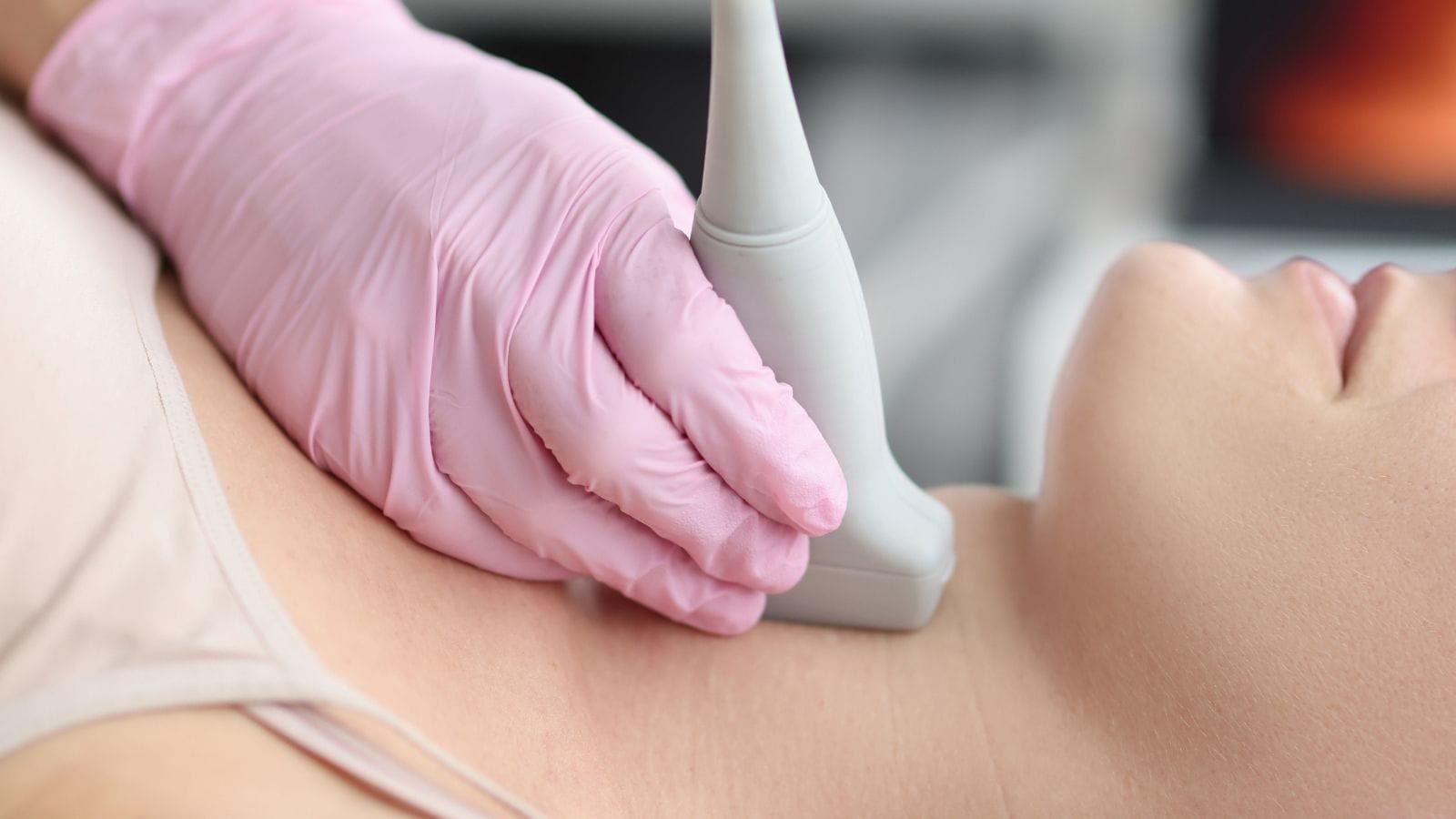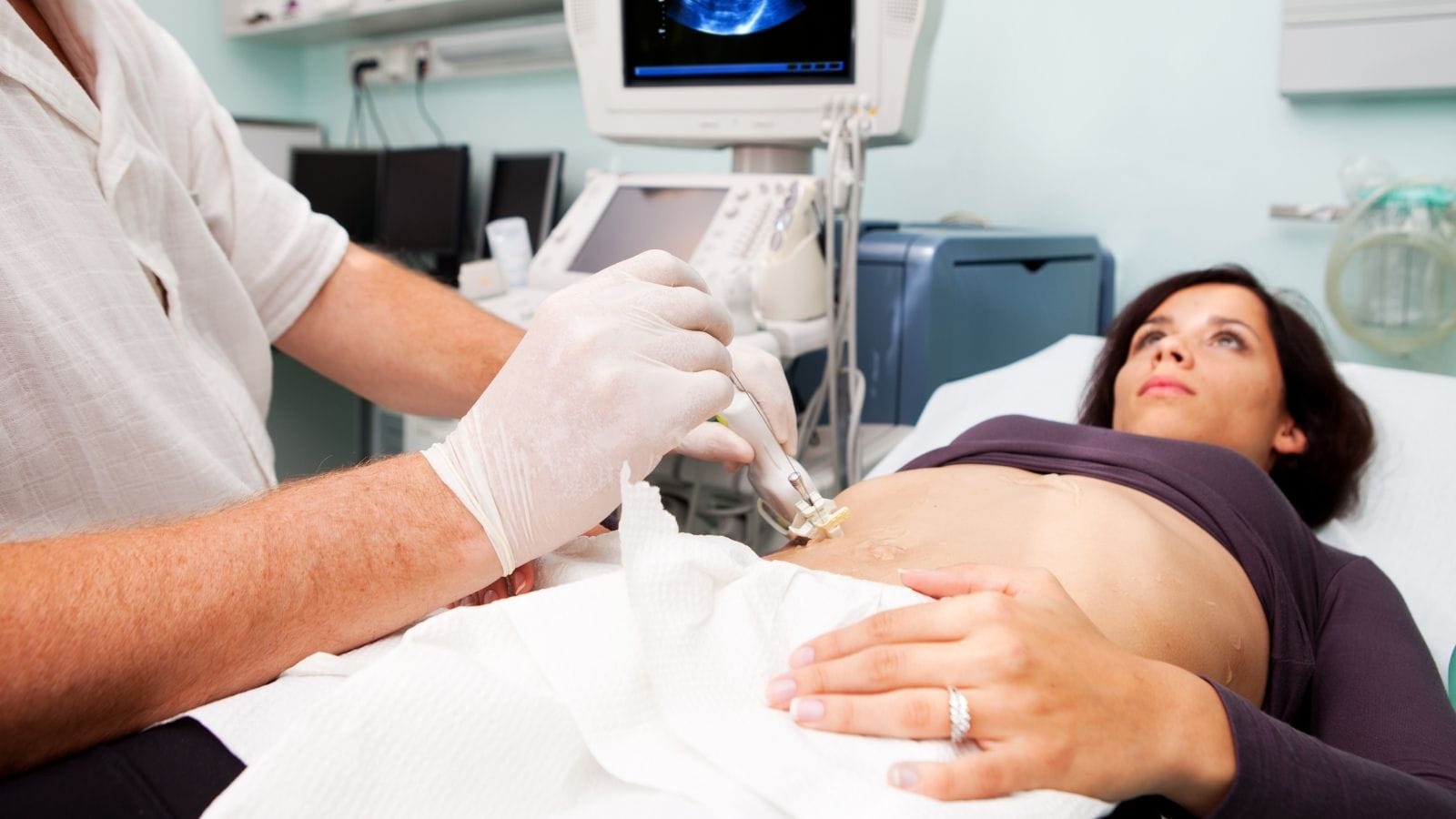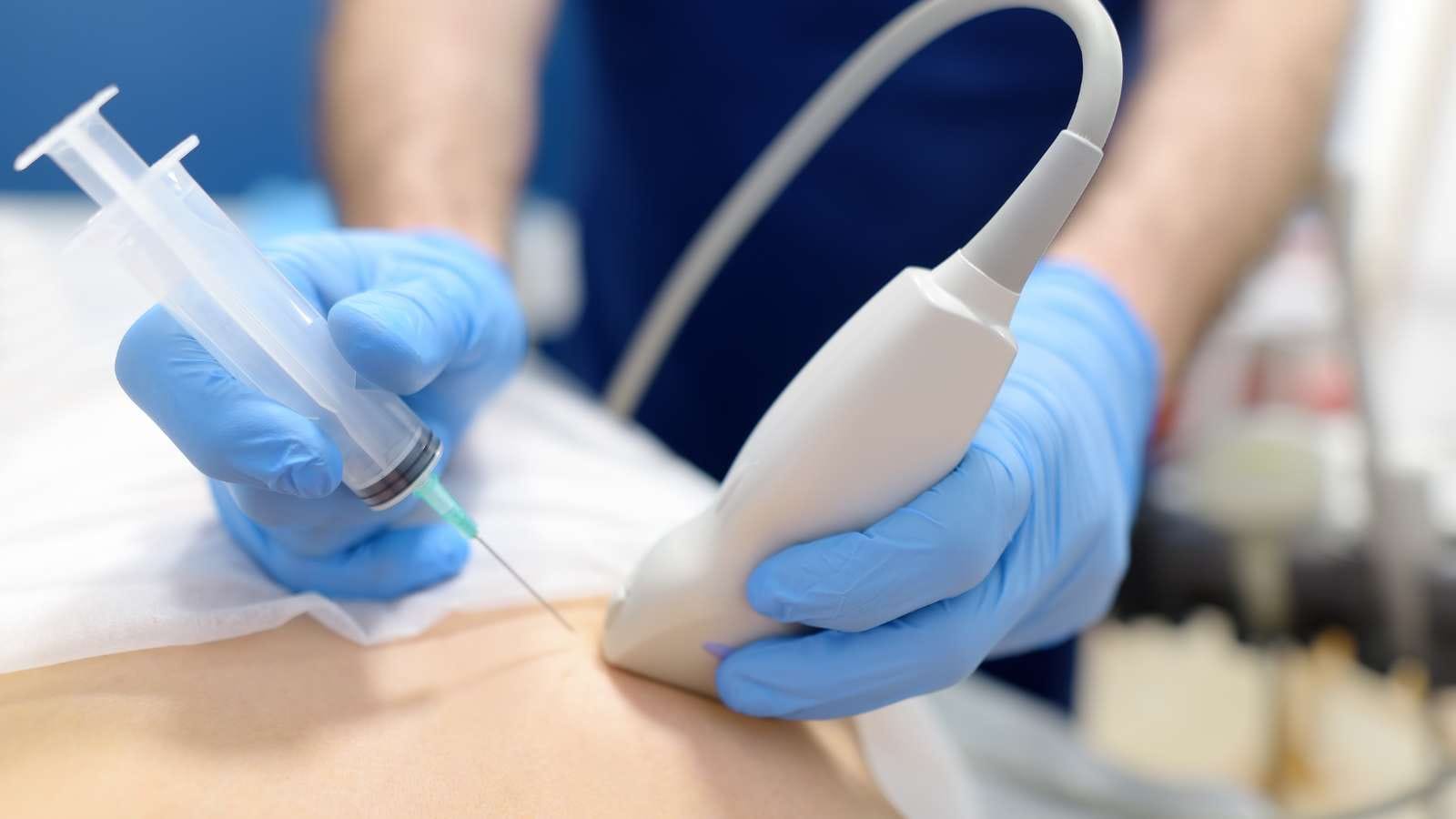Bone biopsy is a diagnostic procedure used to obtain a small tissue sample from bone for microscopic examination. It helps identify infections, tumors, or metabolic bone disorders, providing essential information for accurate diagnosis and treatment planning.
Percutaneous bone biopsy is performed using a needle under imaging guidance such as CT or fluoroscopy. This minimally invasive technique reduces complications, provides high diagnostic accuracy, and allows patients to recover quickly without the need for open surgery.
Histopathological evaluation of bone biopsy samples plays a crucial role in differentiating between benign and malignant bone lesions. This distinction is vital for determining whether surgical intervention, oncological treatment, or medical management is required.
Bone biopsy indications include unexplained bone pain, persistent bone lesions, suspected bone infections, or metastasis evaluation. Timely biopsy ensures early detection of diseases and guides clinicians in developing targeted and effective treatment strategies.
What Is a Bone Biopsy?
Bone biopsy is a method used to diagnose diseases and abnormalities in the bones. Doctors use this test to identify cancer or other pathological conditions in the bones. The biopsy procedure involves taking a tissue sample from the bone and allows for detailed analysis under a microscope. There are two main types of biopsy:
- Needle biopsy: Performed under local anesthesia and a tissue sample is taken with a special needle.
- Open biopsy: Requires general anesthesia and tissue is removed from the bone through a surgical procedure.
Why Might a Bone Biopsy Be Necessary?
Bone biopsy allows doctors to identify various health issues. The main reasons for this procedure include:
- Understanding the causes of pain or tenderness in the bone.
- Examining abnormalities detected in X-ray results in detail.
- Determining whether tumors in the bone tissue are benign or malignant.
This method is also used to find the source of unexplained bone infections or inflammations.
What Are the Risks of Bone Biopsy?
There are several risks associated with the bone biopsy procedure. These complications are usually related to the nature of the procedure and the patient’s health condition. After the procedure, some patients may experience bruising and discomfort in the biopsy area. In rare cases, serious complications such as bone fracture may occur. Prolonged bleeding from the biopsy site is also possible. The risk of infection may especially occur near or in the bone at the biopsy site. These situations may vary depending on the patient’s general health and how the procedure is performed.
How Should I Prepare for a Bone Biopsy?
The preparation process before a bone biopsy is important for the safety and success of the procedure. First, your healthcare provider will inform you about the procedure, and you will need to sign a consent form. It is important to read the form carefully and ask about anything you do not understand before signing.
Evaluation of your medical history and physical condition are standard procedures before the biopsy. This assessment is done to determine if your overall health is suitable for the biopsy. Blood tests and other diagnostic tests may also be requested as part of the preparation.
It is especially important to provide clear and accurate information about allergies:
- To medications
- To latex
- To bandage materials
- If you have any allergies to local or general anesthesia, be sure to mention them.
Inform your healthcare provider about all medications and supplements you are taking:
- Prescription medications
- Over-the-counter medications
- Herbal supplements
It is also important to share if you have a history of bleeding disorders or if you are taking blood-thinning medications. You may be asked to stop these medications before the procedure.
Be sure to inform your healthcare provider if you are pregnant. Especially before a procedure under general anesthesia, you will be asked not to eat or drink anything for at least 8 hours beforehand. Due to the effects of the sedative you will receive before the procedure, you should also arrange for a relative to accompany you home afterwards.
How Is a Bone Biopsy Performed?
The bone biopsy procedure may vary depending on whether the patient is treated as an outpatient or inpatient. The type of anesthesia used during the procedure can be regional or general. When local anesthesia is applied, the biopsy area becomes numb and the patient remains awake during the procedure. Under general anesthesia, the patient is put to sleep for the procedure. These steps are determined by your doctor’s preferences and the patient’s health condition.
The procedure steps are as follows:
- The patient may be asked to wear a special gown.
- Medication may be given via IV.
- The patient is positioned appropriately for the procedure.
- The area for the biopsy is cleaned with an antiseptic solution.
- Local anesthesia may be administered; you may feel a needle prick.
- A small incision is made by the specialist and the biopsy needle is inserted.
- If you are awake, you may feel slight pressure during the biopsy.
- After the needle is removed, pressure is applied until the bleeding stops.
Afterward, your healthcare provider may close the incision area with stitches or skin adhesive strips. Once the procedure is completed, a sterile bandage or dressing is applied, and the bone sample taken is sent to the laboratory.
What Is the Post-Bone Biopsy Process Like?
The post-bone biopsy process may differ depending on the anesthesia used. After the procedure, patients are generally kept under observation. Vital signs; blood pressure, pulse, and respiration are monitored in the recovery room. Once normalcy and full alertness are achieved, the patient is either transferred to a hospital room or sent home. At home, the biopsy area should be kept clean and dry. Bathing should be done according to the instructions provided by the healthcare professional. The biopsy area typically becomes sensitive and may be painful for a few days after the procedure. Pain management should be done with the painkillers recommended by the doctor. Especially, medications such as aspirin that may increase the risk of bleeding should be avoided. If there are stitches in the biopsy area, these will be removed at the next follow-up visit. If adhesive strips are used, they should be kept dry and will usually fall off on their own within a few days.
Situations to watch for after the biopsy:
- Fever or chills
- Redness, swelling, bleeding, or other discharge at the biopsy site
- Increased pain at the biopsy site
What Are the Complications of Bone Biopsy?
Needle biopsy may be associated with certain complications. Although these conditions are generally rare, awareness is important. First, bleeding may occur at the biopsy site. This risk is higher especially in patients with clotting disorders. Second, there is a risk of infection. Procedures not performed under sterile conditions increase this risk. The third risk is possible nerve or blood vessel damage, which can sometimes lead to permanent problems.
- Bleeding at the biopsy site
- Infection
- Nerve or blood vessel damage
Bone fracture is also a possible complication, especially in individuals with weak bone structure. Finally, bleeding or fluid discharge from the biopsy site, warmth, swelling, fever, and pain may also be observed. If these symptoms occur, you should contact your doctor without delay.
What Are the Advantages of Bone Biopsy?
Needle biopsy provides significant advantages in bone biopsies. Firstly, this method offers diagnostic results equivalent to open biopsy, allowing for accurate determination of the disease’s severity. Additionally, being less invasive, it reduces the risk of infection and shortens recovery time. It increases patient comfort during the procedure and causes less discomfort.
- Diagnostic Accuracy: Results obtained with needle biopsy are as accurate and reliable as those of open biopsy.
- Reduced Morbidity: Smaller incisions are used, minimizing the risk of infection and speeding up recovery.
- Time and Cost Efficiency: The procedure is completed more quickly, saving both time and cost.
- Tissue Sampling: Needle biopsy ensures reliable collection of tissue and provides samples suitable for pathological examination.
Frequently Asked Questions

Why is a bone biopsy performed?
Bone biopsy is performed to provide a definitive diagnosis for patients suspected of having a bone tumor. This procedure helps determine whether the tumor is benign or malignant. Moreover, it is necessary to precisely identify the type of tumor in the bone. This allows for a more effective treatment plan. Although this process can be challenging for the patient, making an accurate diagnosis increases the success of the treatment.
How long does a bone biopsy take?
Bone marrow biopsy usually takes about five minutes. A special needle is used during the procedure, which is performed under local anesthesia or sedation. The patient is kept comfortable during the procedure, resulting in minimal discomfort. The total duration may vary depending on the patient’s condition and the specifics of the procedure. However, in general, this process is completed quickly.
How is a bone biopsy performed?
The bone biopsy procedure is performed using a special needle. First, the needle penetrates the bone tissue. It then advances to the area containing bone marrow. At this stage, the doctor collects a sample of bone marrow from a specific area. The tissue taken during the procedure is prepared for examination under a microscope. This method is crucial for diagnosing various bone diseases. The procedure is generally performed under local anesthesia with patient comfort prioritized.
How many days does it take to get bone pathology results?
Pathology results of bone marrow biopsy are generally available within one week to 10 days. This process requires careful medical analysis. Therefore, patients and doctors should wait for results during this period.
Additional Resources and Documents
https://ozgurkilickesmez.com/wp-content/uploads/2024/07/Bone-Biopsies.pdf
https://ozgurkilickesmez.com/wp-content/uploads/2024/07/CT-Guided-Biopsy-of-Bone.pdf

Girişimsel Radyoloji ve Nöroradyoloji Uzmanı Prof. Dr. Özgür Kılıçkesmez, 1997 yılında Cerrahpaşa Tıp Fakültesi’nden mezun oldu. Uzmanlık eğitimini İstanbul Eğitim ve Araştırma Hastanesi’nde tamamladı. Londra’da girişimsel radyoloji ve onkoloji alanında eğitim aldı. İstanbul Çam ve Sakura Şehir Hastanesi’nde girişimsel radyoloji bölümünü kurdu ve 2020 yılında profesör oldu. Çok sayıda uluslararası ödül ve sertifikaya sahip olan Kılıçkesmez’in 150’den fazla bilimsel yayını bulunmakta ve 1500’den fazla atıf almıştır. Halen Medicana Ataköy Hastanesi’nde görev yapmaktadır.









Vaka Örnekleri